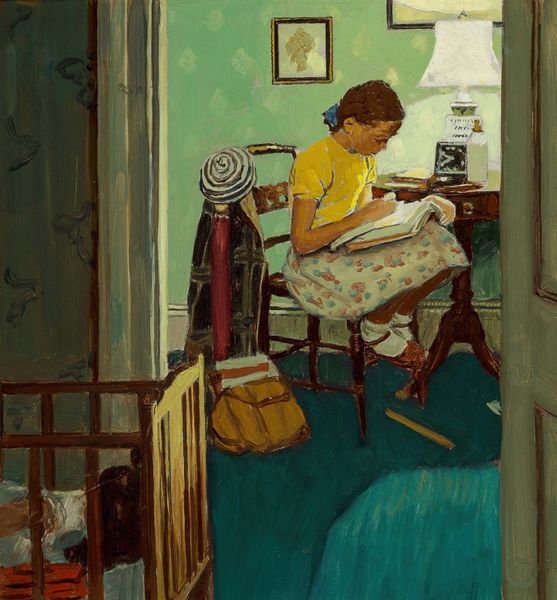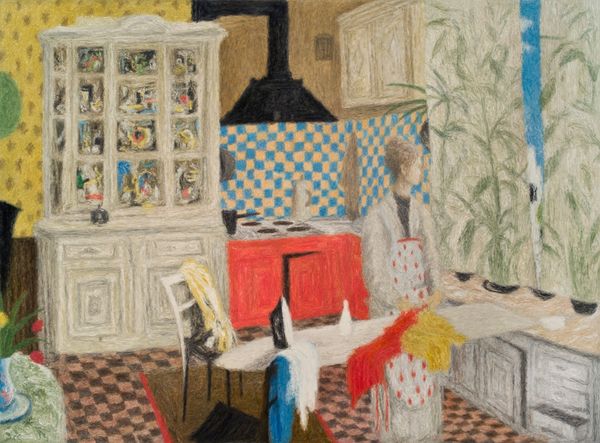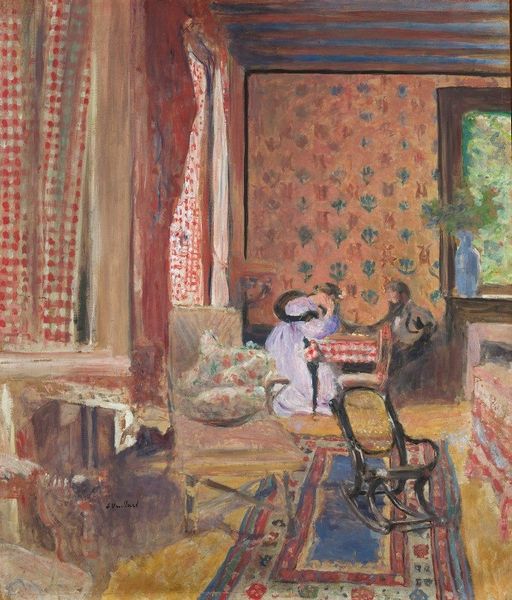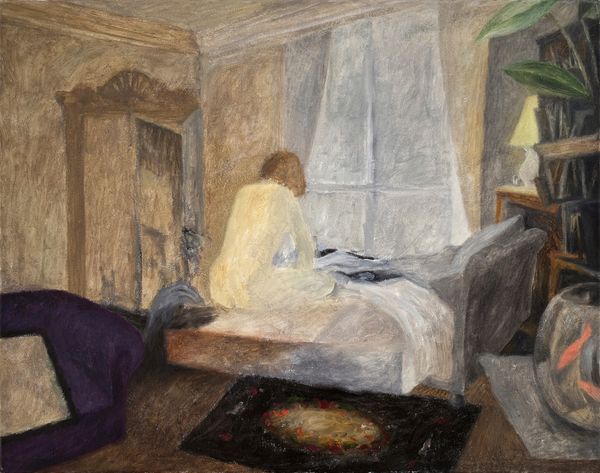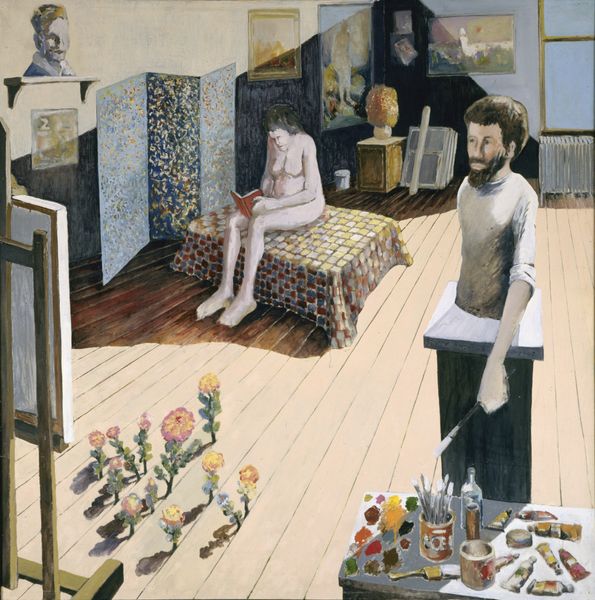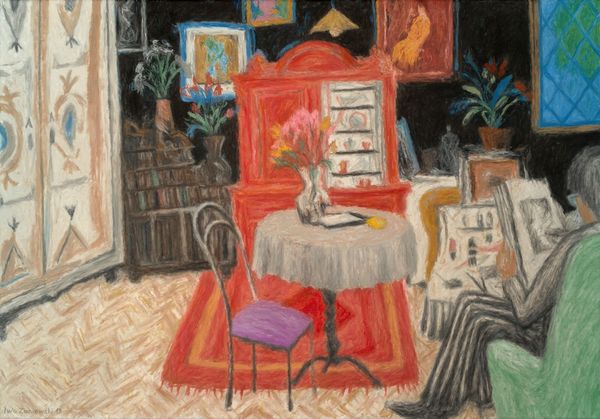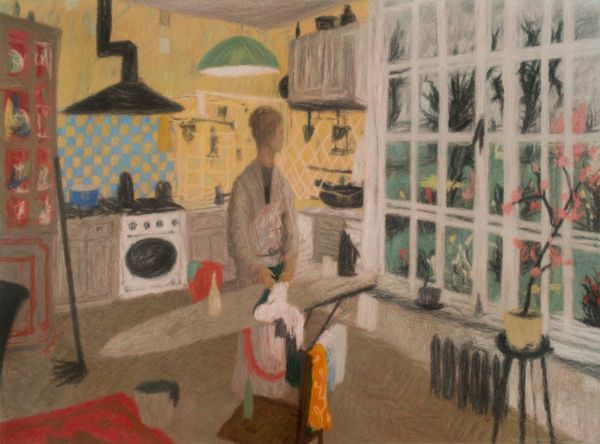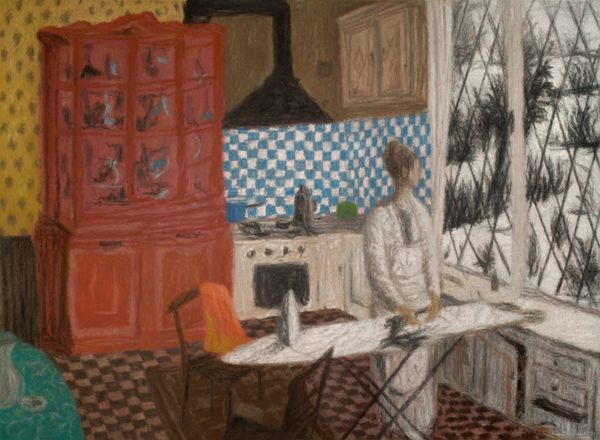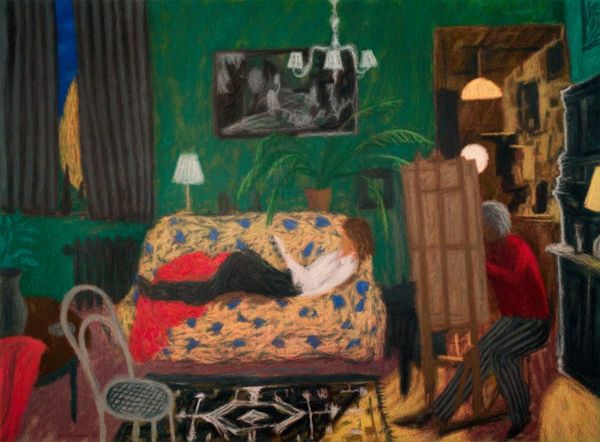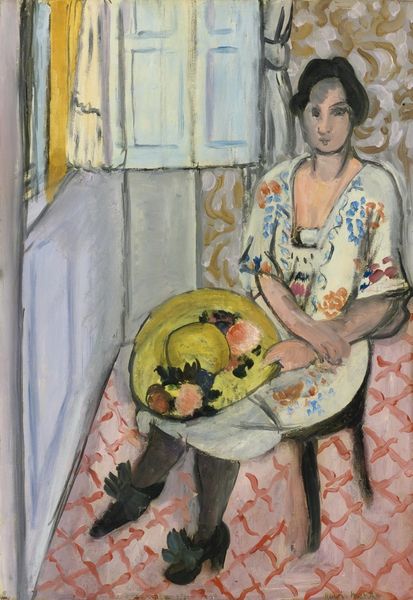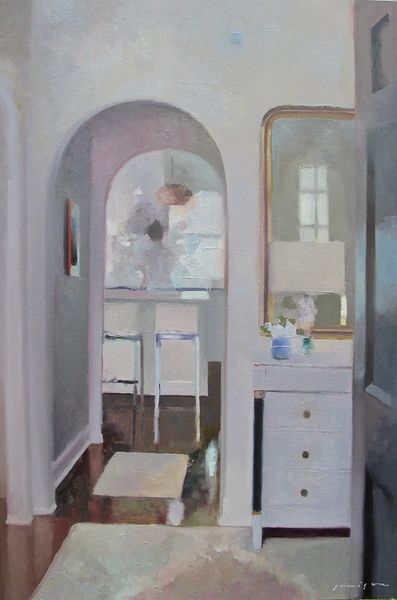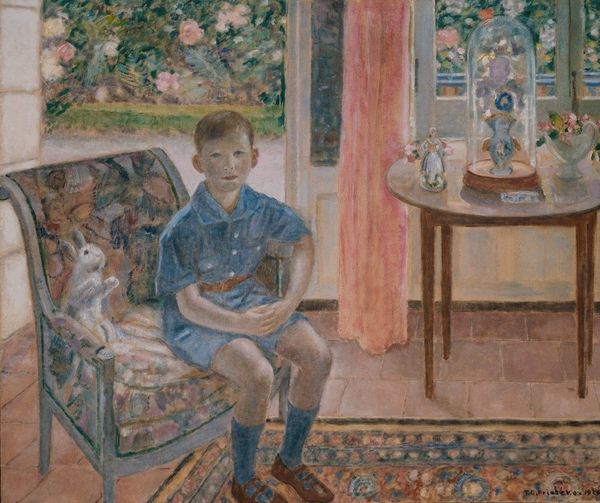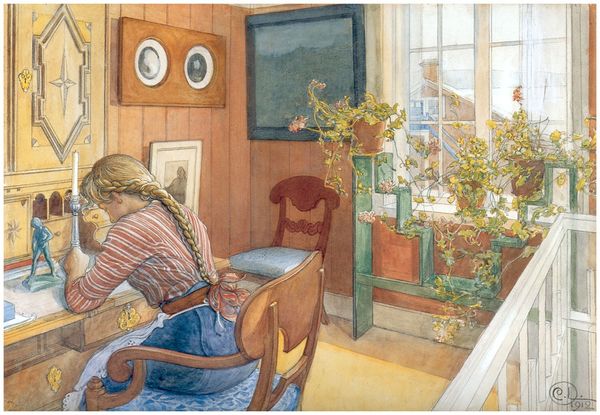
#
portrait
#
figurative
#
arts-&-crafts-movement
#
landscape
#
figuration
#
oil painting
#
watercolor
Copyright: Public Domain: Artvee
Curator: Let’s consider Carl Larsson’s “Portrait of Tage Thiel” from 1915. It’s a watercolor, typical of Larsson’s intimate, domestic scenes. Editor: It strikes me immediately as melancholic. The boy's stiff pose, the cool palette, even the stark geometry of the interior. Everything feels a little… suppressed. Curator: The Thiel family were significant patrons of the arts, active in Stockholm’s cultural circles. Carl Larsson was well-regarded at this time, creating a portrait was almost expected. His domestic imagery promoted an idealized view of Swedish life. But does this portrayal challenge that idealism? Editor: Perhaps. The materiality feels very present—look at the layering of the watercolor, the texture almost fighting the polished surface the boy leans on. It is not a flawless surface; the boy's clothes feel deliberately more vibrant than his subdued surroundings. One is made to think what production went into everything we are shown. Curator: It’s interesting you focus on the material qualities and visible labour in what was meant to represent modern affluence. In this period, discussions about art's purpose became more intense; national identity, social reform—all shaped artistic production and reception. We must be aware of the historical position of such portraits. How they represent sitters within a matrix of economic, social and political networks. Editor: It highlights a tension, doesn't it? Between representation and reality, comfort and…something darker? The almost mass-produced doll house shown near the boy highlights what a perfect child should desire. Does the choice to present him looking elsewhere show more meaning? It pulls us towards acknowledging not just the sitter but the systems surrounding him. Curator: Indeed. Looking at the composition with that reading of industrial mass production of perfection, Larsson, celebrated for his idyllic visions, perhaps captured a more complex reality. Not just surface level presentation. The artist may even, in good conscience, be working toward that very notion. Editor: It moves past sentimentality. The object hood shown in the painting feels crucial, and yet this could very well be lost if it only shown for its intended function, so for me, it transcends beyond pretty portraiture, offering social insight instead. Curator: Agreed. The boy, posed within his house hold setting reveals social status, sure, but maybe the hand crafted nature of the picture invites deeper contemplation as we become witness to not just history being depicted, but history being consciously manufactured through cultural ideals.
Comments
No comments
Be the first to comment and join the conversation on the ultimate creative platform.
